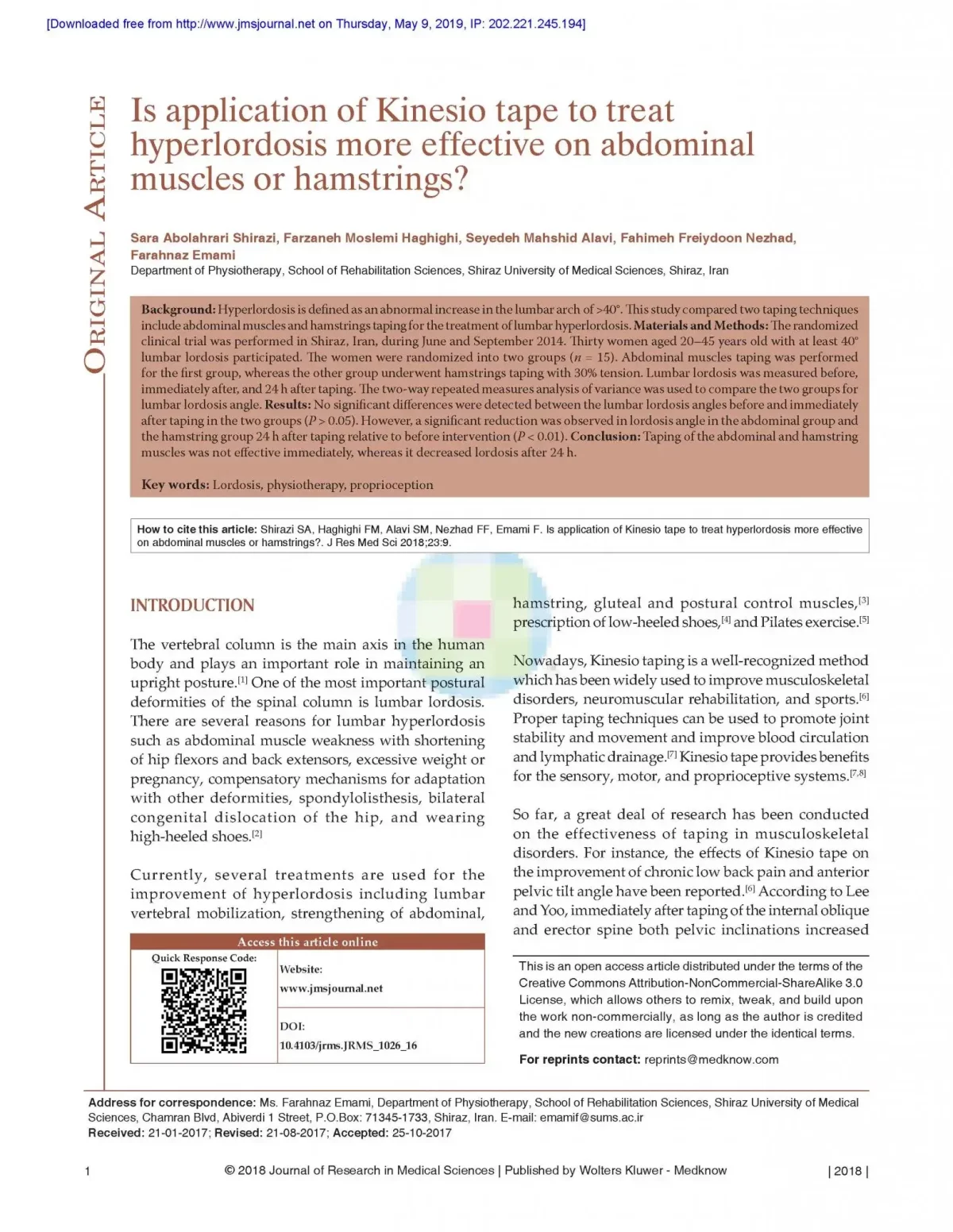THE EFFECTS OF VARIED TENSIONS OF KINESIOLOGY
TAPING ON QUADRICEPS STRENGTH AND LOWER
LIMB FUNCTION
| Julio Fernandes de Jesus Yuri Rafael dos Santos Franco Stella Bispo Nannini Gustavo Bezerra Nakaoka Amir Curcio dos Reis Flavio Fernandes Bryk |
Abstract
Background: Kinesiology Taping (KT) may promote changes in muscle strength and motor performance, topics of great interest in the sports-medicine sciences. These characteristics are purported to be associated with the tension generated by the KT on the skin. However, the most suitable tension for the attainment of these strength and performance
effects has not yet been confirmed.
Materials and Methods: The randomized clinical trial was performed in Shiraz, Iran, during June and September 2014. Thirty women aged 20–45 years old with at least 40° lumbar lordosis participated. The women were randomized into two groups (n = 15). Abdominal muscles taping was performed for the first group, whereas the other group underwent hamstrings taping with 30% tension. Lumbar lordosis was measured before, immediately after, and 24 h after taping. The two‑way repeated measures analysis of variance was used to compare the two groups for lumbar lordosis angle.
Hypothesis/Purpose: The purpose of the present study was to analyze the effects of different tensions of KT on the isometric contraction of the quadriceps and lower limb function of healthy individuals over a period of seven days. Study Design: Blind, randomized, clinical trial.
Methods: One hundred and thirty healthy individuals were distributed into the following five groups: control (without KT); KT0 (KT without tension); KT50; KT75 and KT100 (approximately 50%, 75% and 100% tension applied to the tape, respectively). Assessments of isometric quadriceps strength were conducted using a hand held dynamometer. Lower limb function was assessed through Single Hop Test for Distance, with five measurement periods: baseline; immediately after KT application; three days after KT; five days after KT; and 72h after KT removal (follow-up).
Results: There were no statistically significant differences (p>0.05) at any of the studied periods on participants’ quadriceps strength nor in the function of the lower dominant limb, based on comparisons between the control group and the experimental groups.
Conclusion: KT applied with different tensions did not produce modulations, in short or long-term, on quadriceps’ strength or lower limb function of healthy individuals. Therefore, this type of KT application, when seeking these objectives, should be reconsidered.
Keywords: Kinesiology taping; athletic performance; muscle strength dynamometer; lower limb function
Julio Fernandes de Jesus
Rua Mato Grosso, 128, CEP 01239-040 – São
Paulo, Brazil
Tel.: 55 11 99607-6596
E-mail: julio.fi [email protected]




